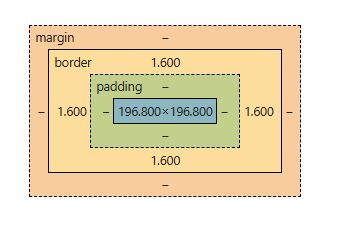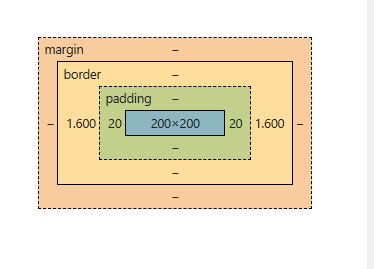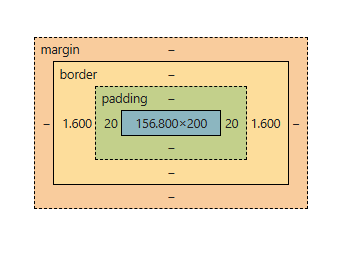CSS Box Model
 Ashu Suhail
Ashu SuhailThe CSS Box Model defines how elements are sized, positioned, and rendered on a webpage. When a browser loads an HTML document, it creates a DOM tree and assigns a box to each element. This box calculates the element’s dimensions and position relative to its parent or the root <html> element, ensuring accurate layout and spacing.
Box Model Component Layout :
Content : The area where text or other content is displayed.
Padding : Space between the content and the element’s border.
Border : A frame that wraps around the padding and content.
Margin : Space between the element’s border and neighbouring elements.

Key components of the box model :
1. Content Area
The content area is the central part of the CSS box model, containing the main content (e.g., text, images, videos, or elements like <p> or <span>).
It can be styled with CSS properties like height and width.
The content edge refers to the four edges of the content area
Left content edge
Right content edge
Top content edge
Bottom content edge
2. Padding Area
The padding area is the space between the content and the border of an element.
it includes the areas highlighted in light green and skin color in the example.
The distance between the content edge and the border is the padding.
The border marks the end of the padding area.
The padding area contributes to the element’s total dimensions.
Padding can be adjusted using CSS properties.
It works similarly with box-sizing: content-box and box-sizing: border-box, but with slight calculation differences.
3. Border Area
The area that marks the end of an element is called as the border it is the outer fencing for the element.
The default border properties are provided in CSS to control the thickness of this outer fencing.
The border area also add ‘s up to the complete height and width of the element.
The more the border width the more will be the height or width of the element.
In the above image the area marked with skin color is called the border area.
4. Margin Area
The area outside the border of an element is called the margin area.
Basically this area depends on the parent of the element.
The distance between the border of the parent element and the border of the child element is called as the margin.
CSS has provides certain margin properties to get control over this scenario.
Box Sizing Property in CSS
There are two type’s of box-sizing properties in CSS
1. Content-Box(default property)
When the user set’s the value of the box-sizing property for an element as content-box or even if user do not set’s it ,it remains by default as content-box and in the actual height and width of the element the dimensions of the content area as well as the padding area is added to constitute the final dimensions of the element.
<html>
<head>
<style>
div {
height: 200px;
width: 200px;
box-sizing: content-box;
padding-left: 20px;
padding-right: 20px;
border-left: 2px solid red;
border-right: 2px solid red;
}
</style>
</head>
<body>
<div>Hello GFG</div>
</body>
</html>
This code will create a box model with a border line width of 0.4px always and border-area of 1.6px and padding area as 20px width on both sides of the content area.

Content Area (Width) :The width of the content area is fixed at 200px.
Padding
Padding adds extra space inside the element, around the content.
Padding Left: 20px
Padding Right: 20px
Total padding width: 20px + 20px = 40px
Border
The border, being solid, has a width, but it is calculated differently from the padding.
Line Width of Border: 0.4px (the width of the line itself)
Area of Border: 1.6px (the actual space the border occupies visually)
Border width for both sides: 1.6px (left) + 1.6px (right) = 3.2px
Total Width
Total width of the element can be calculated by adding the padding and border areas to the content area width.
Formula for Total Width = (Padding-Left + Padding-Right + Border-Area-Left + Border-Area-Right) + Content Area Width
Total Width = (20px + 20px + 1.6px + 1.6px) + 200px = 243.2px
The total width of the element becomes 243.2px.
The reason the total width is increased unexpectedly is because box-sizing: content-box applies the width to the content area only .The padding and border are added outside the content area, leading to an increase in the overall width and height of the element.
2. Border-Box
When the box-sizing property is set as border-box the actual dimensions of the element’s remains same as that of the actual dimensions set by the user. The difference it makes is just that the size of the content area get’s altered in a manner so that it could accommodate the padding area and the border area so the resultant could be equal to the actual dimensions entered by the user.
<html>
<head>
<style>
div {
height: 200px;
width: 200px;
box-sizing:border-box;
padding-left: 20px;
padding-right: 20px;
border-left: 2px solid red;
border-right: 2px solid red;
}
</style>
</head>
<body>
<div>Hello GFG</div>
</body>
</html>
This code will create a box model by altering the dimensions specifically the width of the content area to accomodate the padding and the border area with the border line-width.

Width of Border and Padding Border width : 0.4px (line width) and 1.6px + 1.6px = 3.2px (total border area).
Padding width : 20px + 20px = 40px.
User-Entered Width : The width entered by the user is 200px, which applies to the content area only when box-sizing: content-box is used.
Box-Sizing Behavior :The box-sizing: content-box property adds the padding and border outside the content area, causing the total width to increase.
Adjusting Content Area Width : To ensure the total width remains 200px, the extra width from padding and borders (40px + 3.2px = 43.2px) is subtracted from the total width.
New content area width : 200px – 43.2px = 156.8px.
Final Width Calculation : The final total width is: 156.8px (content area) + 40px (padding) + 3.2px (border) = 200px, ensuring the user’s entered width remains unchanged.
Subscribe to my newsletter
Read articles from Ashu Suhail directly inside your inbox. Subscribe to the newsletter, and don't miss out.
Written by
